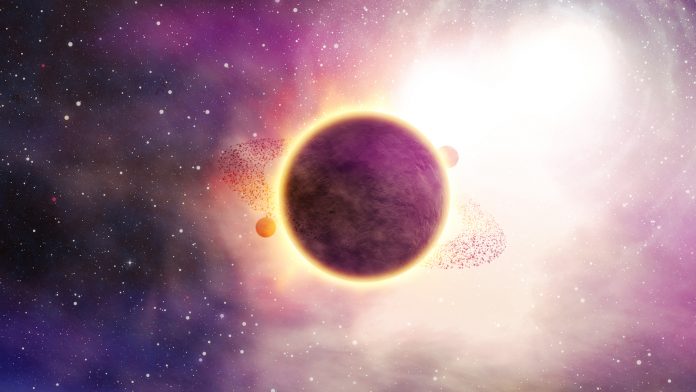Using the European Southern Observatory’s Very Large Telescope (ESO’s VLT), astronomers have discovered barium in the atmosphere of two exoplanets – the heaviest element ever found.
The presence of barium was discovered at high altitudes within the atmospheres of two ultra-hot gas giants, WASP-76 b and WASP-121 b. These two planets orbit stars outside our Solar System.
This exciting new discovery, published in Astronomy & Astrophysics, has led astronomers to question the current state of exotic atmospheres outside our orbit.
The ‘surprising’ discovery of a heavy element
Tomás Azevedo Silva, a PhD student at the University of Porto and the Instituto de Astrofísica e Ciências do Espaço (IA) in Portugal, said: “The puzzling and counterintuitive part is: why is there such a heavy element in the upper layers of the atmosphere of these planets?”
The two planets studied are extraordinary. Both are known as ultra-hot Jupiters, as they are comparable in size to Jupiter. Moreover, they have extremely high surface temperatures, which soar above 1,000°C.
These exoplanets exhibit these characteristics due to their close proximity to their host stars, which also means their orbit around these stars takes as little as one to two days. This gives these planets unique and exotic features, such as iron rain on WASP-76 b.
Even so, the team were surprised to discover barium, which is 2.5 times heavier than iron, in the upper atmospheres of the planets. “Given the high gravity of the planets, we would expect heavy elements like barium to quickly fall into the lower layers of the atmosphere,” explained Olivier Demangeon, a researcher from the University of Porto and IA.
Silva added: “This was, in a way, an ‘accidental’ discovery. We were not expecting or looking for barium in particular, and had to cross-check that this was actually coming from the planet since it had never been seen in any exoplanet before.”
Determining the composition of an exoplanet’s atmosphere
The fact that barium was detected in both WASP-76 b and WASP-121 b suggests that their atmospheres may be stranger than astronomers originally thought. On Earth, barium is occasionally seen in the sky through fireworks; however, scientists want to determine what causes the natural presence of barium at high altitudes.
In the study of exoplanet atmospheres, ultra-hot Jupiters are extremely useful. Demangeon stated: “At the moment, we are not sure what the mechanisms are. Being gaseous and hot, their atmospheres are very extended, and are thus easier to observe and study than those of smaller or cooler planets.”
However, determining the composition of an exoplanet’s atmosphere requires very specialised equipment. The team used the ESPRESSO instrument on ESO’s VLT in Chile, analysing starlight that had been filtered through the atmospheres of the two planets.
Through this study, the researchers were able to clearly detect several elements in them, including barium. The new results show that astronomers have only scratched the surface when it comes to studying exoplanets.
Future instruments, such as the high-resolution ArmazoNes High Dispersion Echelle Spectograph (ANDES), will operate on ESO’s upcoming Extremely Large Telescope. By doing this, astronomers will be able to study the atmospheres of exoplanets, both large and small, including those with a similar composition to Earth.
In the future, scientists may be able to gather more clues about the nature of these strange worlds.









